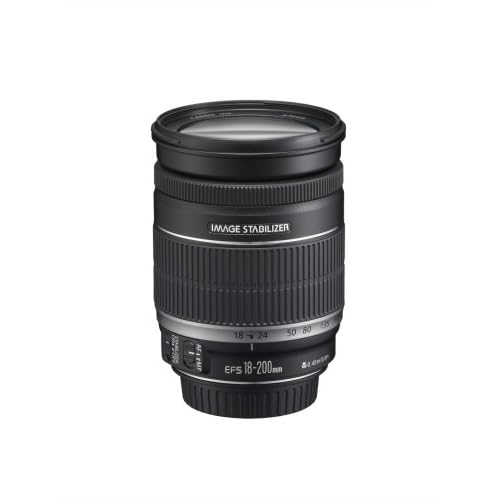 |
| This is it, the 18-200mm Canon Lens |
While we refer to it as the 18-200mm Canon lens, it has an official name. It is a Canon EF-S 18-200mm f/3.5-5.6 IS
These Super-Zoom lenses are strongly regarded as holiday or travel lenses because they are "one lens fits all" alternatives. You can leave your camera bag back at the hotel room..
When you have to stop and change lenses to match the circumstances, it is likely that the photo op will evaporate before you can take advantage of it. With the 18-200mm Canon lens, you don't have to fret about which lens is affixed to your camera. It is fantastic for getting those quick, fleeting shots.
In fact, having to change lenses is one of the blessings AND the curses of digital SLR owners. We actually buy the cameras so we can change the lens, then we are frustrated when we have to.
 |
| 40D at 200mm : Lilac-breasted roller in Kruger National Park, South Africa. Pleasing bokeh in the background. (from images at amazon for Canon 18-200mm lens) |
To start with, as pointed out is the focal range, which is 11x. Taking into consideration the monumental variance in range, the image quality is outstanding.
Also, there is IS (image stabilization) which is supposed to give you an additional 4-stops of aperture without having to use a tripod. This is important because the widest aperture is only f/3.5, and it increases from there to a max of f/5.6. This is typical of the super-zoom lenses, whether Canon or some other manufacturer.
One more benefit is the bokeh that is produced when using a wide aperture. Photographers are always comparing bokeh. Briefly, it is when you try to get the main subject of your photo in sharp focus and have the other areas of the photo in a pleasingly blurred focus. The 18-200 does a pretty good job with this, but it is not considered the best.
The last benefit has to do with a comparison to the "kit lenses" that Canon promotes. Sometimes new buyers purchase the 18-55mm starter lens and an additional 55-250mm lens for the mid-range focal lengths. These two lenses are not bad as far as image quality goes, but they are not high quality construction.
The Canon 18-200mm lens is far better constructed than the kit lenses.
The Down Side
There are some concerns to consider. You will find this true of the majority of super-zooms, whether they are Canon, Nikon, Sigma, or Tamron lenses. There is a compromise in image quality in order to get the wide focal range. Most will have barrel distortion at the wide angles and chromatic aberration issues at both the shortest and the longest focal lengths.
In spite of these issues, the images are not really bad. In fact, they are quite good. The issues are barely noticeable to the novice. However if you are searching for the pixel-perfect image, you will possibly need to fork out more money or work with a more specific focal length lens.
What about third party lenses.
Third party lens makers have designed some really good lenses that fit Canon digital SLR cameras. If the positive aspects and problem areas are the same, why don't you give some thought to saving some money for one of those? It's a thought.
As you look at the 18-200mm Canon lens, you will be pleasantly surprised at how well it really does perform.
But do take a look at the other lenses in the same category. You can do that at Canon EOS Lenses.

No comments:
Post a Comment